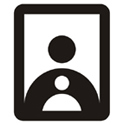When
it comes to accessing files and folders, there are a lot of ways in
Windows operating system and one of the most efficient ways is the
Windows Run Command box. Nothing beat its efficiency and remains a
favorite for all the computer enthusiast till now.
15 Windows Command Prompt everyone should know
There are lots of commands to try, some for fun, some for something complicated and some for daily tasks like opening calculator, paint and more. Today we have compiled a list of 15 commands you should know if you love computers.
15 Windows Command Prompt everyone should know
There are lots of commands to try, some for fun, some for something complicated and some for daily tasks like opening calculator, paint and more. Today we have compiled a list of 15 commands you should know if you love computers.
1.
%temp% - By using this command, you can clear the temporary files from
your computer. This can save a lot of space which was being wasted by
temporary files.
2. cmd - Using this command, it will open the windows DOS command prompt. 3. MSConfig - If you are using this command, it will open Windows System Configuration for you to edit different things like the boot options, startup options, and more. 4. powershell – Typing this command in the Run dialog box, will have your PowerShell opened without administrator privileges. 5. lusrmgr.msc - This command opens the Local Users and Groups Manager where you can edit several properties of all the users and groups. 6. perfmon.msc - If suppose you want to monitor the performance of your Windows computer and the programs you run, you can type in this command. This will open the Performance Monitor that will provide data. command. 7. appwiz.cpl – This command opens the Programs and Features window where you can quickly uninstall your installed programs. 8. devmgmt.msc – This is the command for Windows Device Manager, where you can manage all your hardware devices. 9. regedit - This command is used to open the Windows Register, which is a hierarchical database that hosts all the configurations and settings of an operating system and the installed programs. 10. .. (two dots) - This command will open up the Users folder which is located directly on the C drive. 11. . (single dot) - This command opens the current user’s home folder which hosts all the other local folders like the Downloads, Documents, Desktop, and Pictures. 12. Control - This command will open Control Panel, where you can modify your system. 13. Notepad - If you want to note down something, you can use this command to open Notepad. 14. taskmgr - This open task manager where you can manage all the processes and programs running on Windows Operating system. 15. sysdm.cpl – This command will open the System Properties window |







0 comments:
Post a Comment